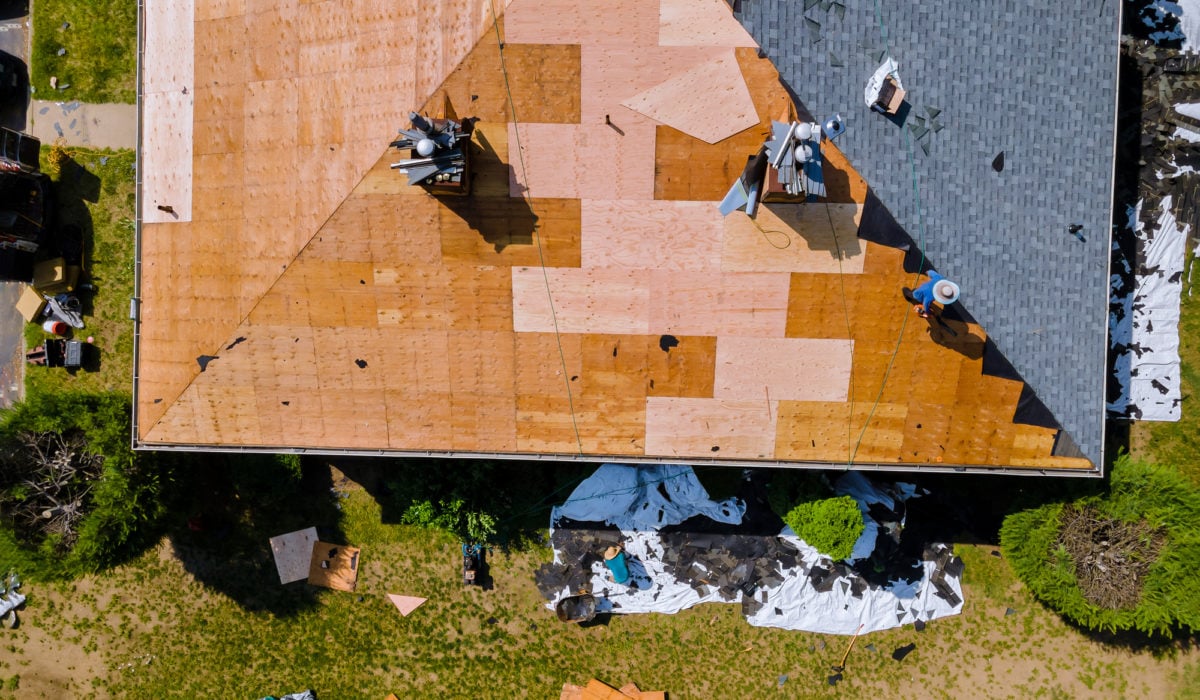- 0 Comment
Roof Replacement: A Comprehensive Guide to a Successful Project
Your roof is one of the most critical components of your home’s structure, protecting it from the elements year-round. Over time, wear and tear, weather exposure, and age can lead to the need for a roof replacement. A well-executed roof replacement is not only a necessary investment in your home’s integrity but also an opportunity to enhance its curb appeal and energy efficiency. In this comprehensive guide, we’ll walk you through the essential steps and considerations for a successful roof replacement project.
1. Inspection and Assessment:
The first step in any roof replacement project is a thorough inspection and assessment of your existing roof. It’s essential to identify and document the extent of damage, areas in need of repair, and any underlying issues. A professional roofing contractor can provide an in-depth assessment, determining whether a replacement is necessary or if repairs can suffice.
2. Material Selection:
Selecting the right roofing materials is a crucial decision. There are various options available, including asphalt shingles, metal roofing, wood shingles, tile, and more. Consider factors such as durability, energy efficiency, cost, and aesthetics. Consult with your roofing contractor to determine the best material for your home’s needs and your budget.
3. Budget Planning:
Establish a clear budget for your roof replacement project. It should encompass material costs, labor, permits, disposal of the old roofing materials, and any unforeseen expenses that may arise during the project. Having a well-defined budget helps you stay on track and prevents financial surprises.
4. Roofing Contractor Selection:
Choosing the right roofing contractor is a critical decision that can significantly impact the outcome of your project. Look for experienced, licensed, and insured contractors with a track record of successful roof replacements in your area. Check references and reviews to ensure their credibility and reliability.
5. Permits and Regulations:
Before starting your roof replacement, be aware of local building codes and regulations. Obtain any necessary permits and ensure that your project complies with all legal requirements. Your roofing contractor should be familiar with these regulations and assist in obtaining the necessary permits.
6. Removal of Old Roofing Material:
In most cases, the old roofing material must be removed before installing the new roof. This process involves stripping away the old shingles, underlayment, and any damaged decking. Proper removal ensures a clean surface for the installation of the new roofing material.
7. Deck Inspection and Repairs:
Once the old roofing material is removed, the deck (the structural surface beneath the roofing material) should be inspected for any damage or deterioration. Any necessary repairs or replacements should be completed to ensure a solid foundation for the new roof.
8. Installation of Underlayment:
Underlayment is a critical component that provides an extra layer of protection between the roof deck and the roofing material. It serves as a moisture barrier and helps prevent leaks. The type of underlayment used depends on the roofing material selected.
9. Installation of Roofing Material:
The installation of the chosen roofing material is a meticulous process that should be executed with precision. Proper installation techniques, including correct nailing, flashing, and ventilation, are essential to the longevity and performance of your new roof.
10. Ventilation and Insulation:
Effective roof ventilation is crucial for regulating temperature and moisture levels in your attic. Proper insulation is also essential for energy efficiency. Discuss ventilation and insulation options with your roofing contractor to ensure they meet your home’s needs.
11. Cleanup and Disposal:
A reputable roofing contractor will ensure that your property is left clean and free of debris after the roof replacement is complete. Old roofing materials and waste should be disposed of properly and responsibly.
12. Final Inspection and Warranty:
Before considering the project complete, conduct a final inspection with your roofing contractor to ensure that all aspects of the replacement meet your satisfaction. Additionally, discuss and obtain a warranty for your new roof, covering both materials and workmanship.
13. Ongoing Maintenance:
Regular roof maintenance is essential to prolonging the life of your new roof. Schedule periodic inspections, clear debris from gutters and valleys, and address any minor issues promptly to prevent them from becoming major problems.
Conclusion:
A roof replacement is a significant investment in your home’s safety, comfort, and appearance. By following these essential steps and considerations, you can ensure a successful roof replacement project that enhances your home’s value, energy efficiency, and protection. Partnering with a reputable roofing contractor who understands your needs and adheres to best practices is key to achieving a durable and aesthetically pleasing new roof that will serve your home for years to come.

